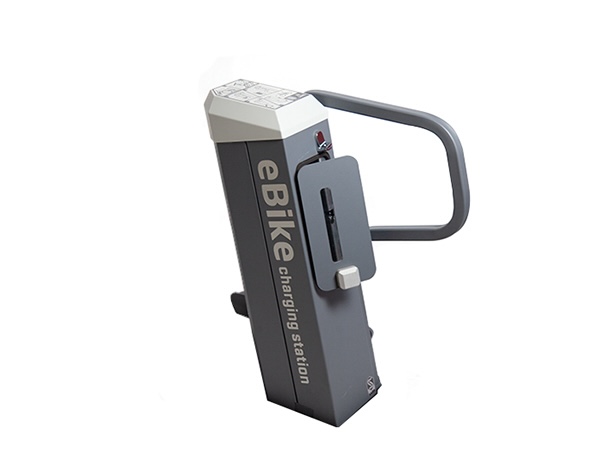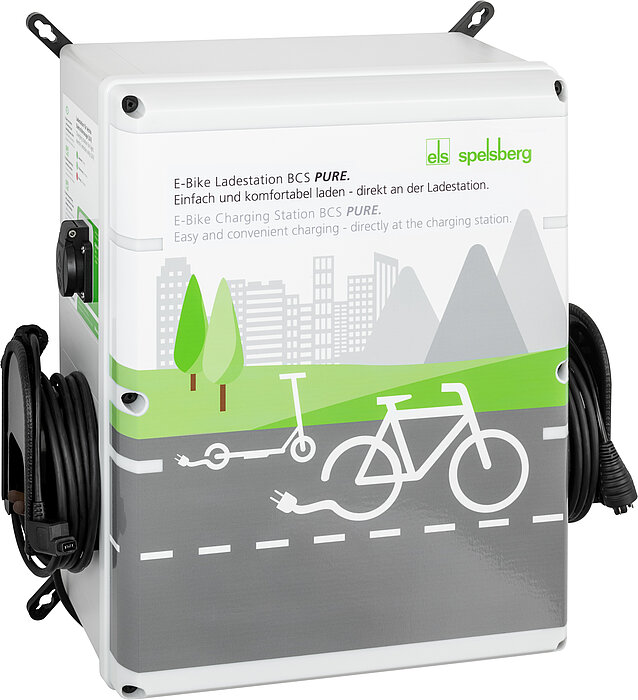E-Bike Future: Are Charging Stations or Battery Swaps The Public E-Bike Future
Both options are being tried in pilot programs; which is better?

Once a rider has exhausted the charge in their e-bike’s battery, few people face any option than to park their e-bike and recharge it, a process that can take anywhere from three to eight hours, depending on the size of the battery and how quickly the charger can deliver power to the battery—a large battery and a 2-amp charger could require the whole night to replenish the battery.
Clearly, that’s not practical for businesses that may make more than 100 deliveries in a day or riders with long commutes, so cities have begun to examine two different strategies for building infrastructure to meet the needs of e-bike riders.
One option is to follow the example of charging stations such as Tesla’s superchargers, positioning them where e-bike riders are likely to be found. The other option is to offer battery swap stations in similar high-traffic areas. Both have advantages and disadvantages and we’re going to take a dive into what those are.
Charging stations
The simplest option for cities to support e-bike recharging is to offer charging stations. While there are a number of designs for these, with many already in use in Europe and Asia, these typically share the following features: There is a secure rack to which the rider can lock their e-bike and that rack includes an outlet the rider can plug their charger into.
By simply providing a grounded 110V outlet that the rider can plug their charger into, cities can sidestep the issue of the many different charger designs on the market. They provide the power and a secure place to park the e-bike while it charges, and the rest is up to the rider.
The benefit to this approach is that it is brand-neutral and the least-expensive option, which increases the likelihood that a city could install a number of stations around the community.
The downside to this approach is that riders are inconvenienced by needing to bring their chargers with them when they ride, which means they need a basket, pannier or backpack. Worse, unless the charging station is in a secure location, someone could steal the charger and imagine the nightmare someone would face if they returned to their bike after working a full day only to find no charger, a dead battery and a long ride home. Hello Lyft.
Battery swapping stations
With battery swapping stations, a rider can simply ride up to the station, insert their dead battery and pull out a fresh battery. At least, that’s how it works in broad strokes. With most systems, a rider needs either an account or a credit card.
The obvious upside to this system as compared to charging stations is that there’s no waiting on the part of the rider and no risk of theft. For someone making deliveries by e-bike, the advantages are obvious.
The downsides to this approach come in two different ways: compatibility and cost. On the cost front, charging stations are substantially more expensive for a city to provide, which would likely limit the number that might be installed. Limiting their installation will likely slow their adoption.
The compatibility issue presents just as significant a hurdle. Most batteries feature a brand-specific, proprietary design that limits interchangeability. Battery swapping for popular OEM systems such as Bosch, Shimano or Yamaha will cover only a fraction of the batteries in use.
What’s in the market
The good news regarding the charging vs. battery swap debate is that both of these solutions are being pursued by both established companies and startups.
Bike rack and trainer manufacturer Saris has introduced a charging station as part of their infrastructure product line that allows the user to lock their charger inside the charging box so that only cord runs from the charging box to the e-bike, solving one aspect of e-bike charging security.
New York City is testing its first charging station, with an eye to add more in the future.
Spelsberg, based in Germany, makes a charging station that incorporates a charger so that riders don’t need to bring their charger along, but its connectors only work with Bosch or Shimano systems so far.
On the battery swap front, Popwheels has launched a battery swapping cabinet which is being installed in a variety of locations around New York. They claim compatibility with 90 percent of the e-bike batteries being used by delivery workers, but they work with just three models from Arrow and two models from Fly, leaving out most brands on the market.
Yamaha has launched a business in the Netherlands and Germany called Enyring that will provide battery swapping.
Swobbee is another e-bike charging station that can charge eight different types of batteries, but currently those batteries don’t work with any of the more popular e-bike brands or systems on the market.
Electric Bike Report’s take
In theory, being able to swap batteries is what will make for the most attractive solution for riders. It’s quick and most solutions promise to be relatively inexpensive. The problem is that so far it doesn’t appear that any of the battery swap station designs can come close to providing a solution that would work for more than a small minority of brands.
Until there is greater standardization of connectors, battery swapping stations are a better idea than they are a technology. Charging stations, on the other hand, provide a much more flexible solution and provided that charging stations can keep the charger secure, as in the Saris design, cities seem more likely to implement these as a solution due to their lower cost and greater compatibility.





Ebike charging – although you showed the Spelsberg charging unit, you didn’t specially mention it in the article. From what I have determined from numerous contacts there is no distribution available for this product in North America and is only available for European and Asia markets. I can only surmise the product would need to undergo UL listing and minor engineering changes for the US market. They also produce a unit that could sell for under $150 that can charge up to 3 ebikes at once. I have searched Alibaba’s website and found several existing ebike charging products that could be modified and work in the US market and entered numerous inquiries to no avail. I do commend Saris for their charging products since they will work well for certain situation.